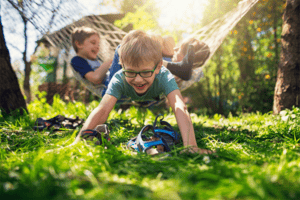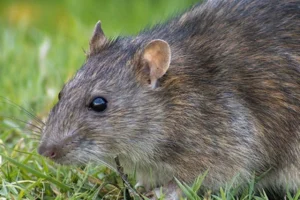A sustainable revolution has begun against the demand for pesticide use on unwanted insects in and around our home, landscape and gardens.
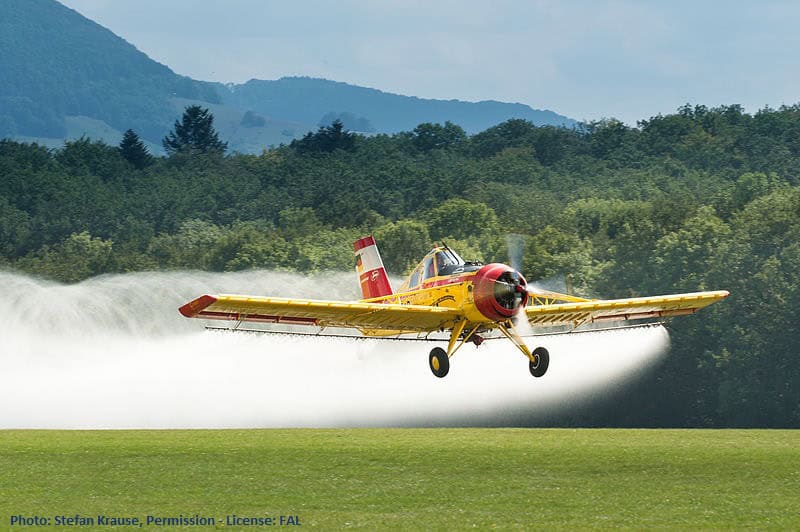
Homeowners have opened up their eyes to see toxins spread from farmlands to the produce section of the grocery store; consumers now stress the need for organic and sustainable tactics that will replace these poisons with beneficial options.
The longstanding attitude that killing all insects, good and bad, will increase crop yields has been superseded by a targeted approach of only killing the insect that is doing the damage.
A disturbing estimation from a Cornell entomologist noted that only 0.1% of all applied pesticides actually reach the target pest. The remainder is lost to soil contamination, water pollution and/or killing beneficial insects.
This has also led to a dramatic drop in larger predator populations in nearby areas, as it takes longer for birds and other beneficial insects to recover than the targeted pests.
The Western Honeybee population has had a significant drop reaching to Colony Collapse Disorder (CCD) levels.
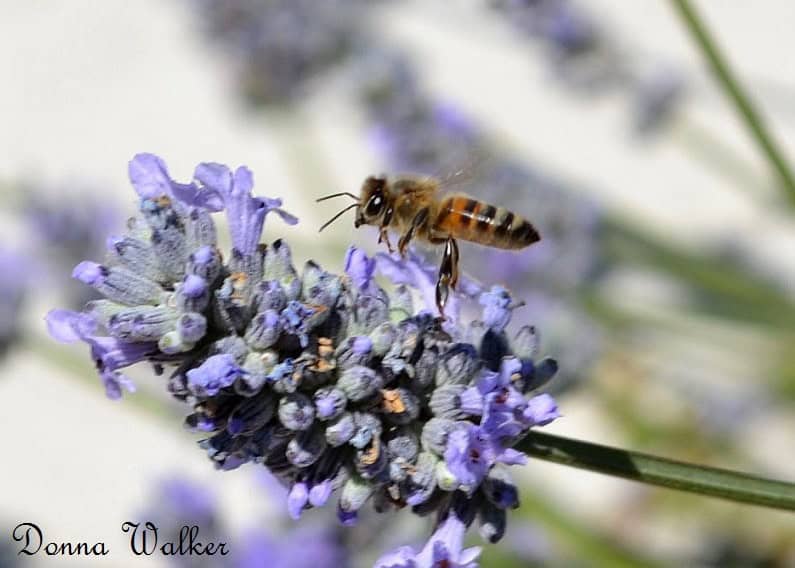
Some scientists attribute this downfall to pesticide applications whereas others believe variables like the increase in predators from other continents via transportation (mites).
Other issues from environmental stressors (scarcity of pollen due to development), secondary exposure to pesticides, a decrease in residential bee keeping, and the rising urban sprawl throughout the country (See figure 4.) has lead to the decline of honeybees.
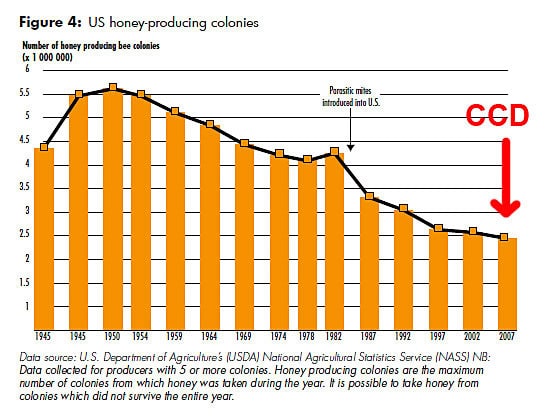
There are numerous ways to manage pests without massively killing all organisms. One new idea, titled Ecological Pest Management (EPM), is comprised of three main points that utilize your existing landscape/backyard:
o Good soil with a neutral pH and high nutrition values can strengthen the plants vitality and decrease the outbreak of diseases and susceptibility of insects
o Using beneficial insects to combat harmful pests. Common beneficial insects are ladybugs, preying mantises, lacewings and beneficial nematodes.
o Introduce birds and bats nearby. Bats are one nature´s best pest control in that they only feed on insects. Other small birds, like chickadees, require over 2,000 insects per day to feed their babies.
Integrated Pest Management Strategies
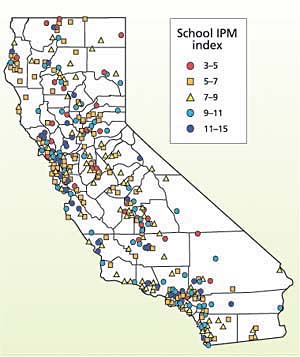
Not only do the practices of EPM fight off destructive pests, it also restores balance and biodiversity to the natural landscape.
The Environmental Protection Agency (EPA) also adopted this philosophy with numerous initiatives that promote Integrated Pest Management (IPM).
IPM is a systematic method of pest control that uses continued inspections, monitoring and record keeping of pests to help manage the problems.
Aiding in home repairs, deep cleaning and other non-chemical methods to keep pests at a manageable level is an important part of IPM.
The PestWise program, a volunteer program associated with the EPA to work with numerous pesticide-user organizations, advocates IPM and all of its practices.
Two particular initiatives are the Integrated Pest Management in Schools program and the Landscaping program. The schools initiative focuses on the precaution of pests and pesticides in the school arena by using the following IPM techniques:
- Place weather stripping on doors, caulk and seal openings in walls
- Keep vegetation, shrubs, and wood mulch at least 1 foot away from structures
- Keep areas dry by removing standing water and water damaged or wet materials
- In science labs, store animal foods in tightly sealed containers and regularly clean cages
- Place screens on vents, windows, and floor drains to prevent cockroaches and other pests from using unscreened ducts or vents as pathways
- Remove food debris, sweep up all crumbs, fix dripping faucets and leaks, and dry out wet areas
Promptly repair leaks and correct other plumbing problems to deny pests access to water
Keep areas dry, avoid conditions that allow formation of condensation, which are conducive to molds and fungi
After use, promptly clean mops and mop buckets; dry mop-buckets and hang mops vertically on rack above floor drain
Clean trash cans regularly, use plastic liners in trash-cans, and use secure lids
With these commonsense methods, California school districts have been able to greatly reduce the amount of pesticides used in and around the school property. This sustainable pest control system has shown great improvements among school districts with IPM methods. Problems persist with continuous record keeping.
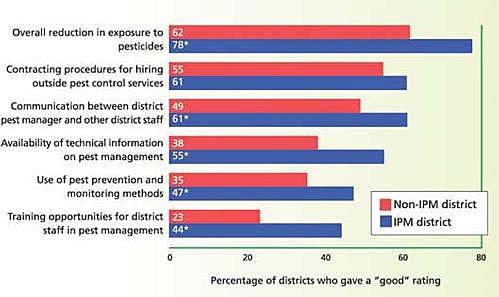
The EPA´s Landscape initiative has also shown great strides to reduce the amount of pesticides used nationwide by partnering with a variety of pest control and lawn care professionals, government agencies and other businesses.
By introducing commonsense techniques, homeowners, golf establishments and other small businesses can greatly reduce the amount of pesticides used in the landscape. Some of these include choosing the correct type of grass for the area, how and when to mow/water and continuous record keeping of the thatch depth.
Natural Forms of Sustainable Pest Control
Ducks as Pest Control Agents
Other natural forms of sustainable pest control are used all around the world as organic products become higher in demand.
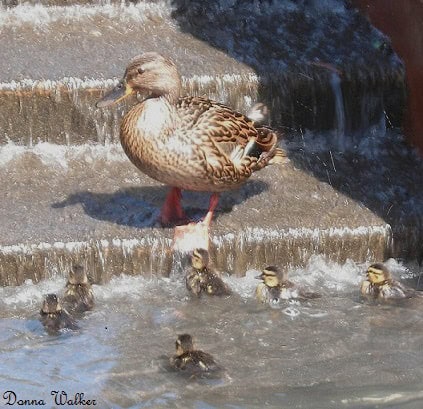
Ducks have been used for centuries as a natural bug eater in gardens and farms.
They scavenge the ground and work as a valuable ally against invading pests like slugs, snails, grubs, Japanese beetle larvae, potato beetles and grasshoppers.
Ducks also provide ample plant food via their manure!
Parasitic Wasps
Another interesting natural ally to pest control is the parasite wasp.
These tiny insects target arthropods where the female lays their eggs inside the insect.
Once the larva metamorphoses into a pupa, it feeds on the insides of the insect and emerges as an adult from the mummified insect as shown in the diagram with an aphid.
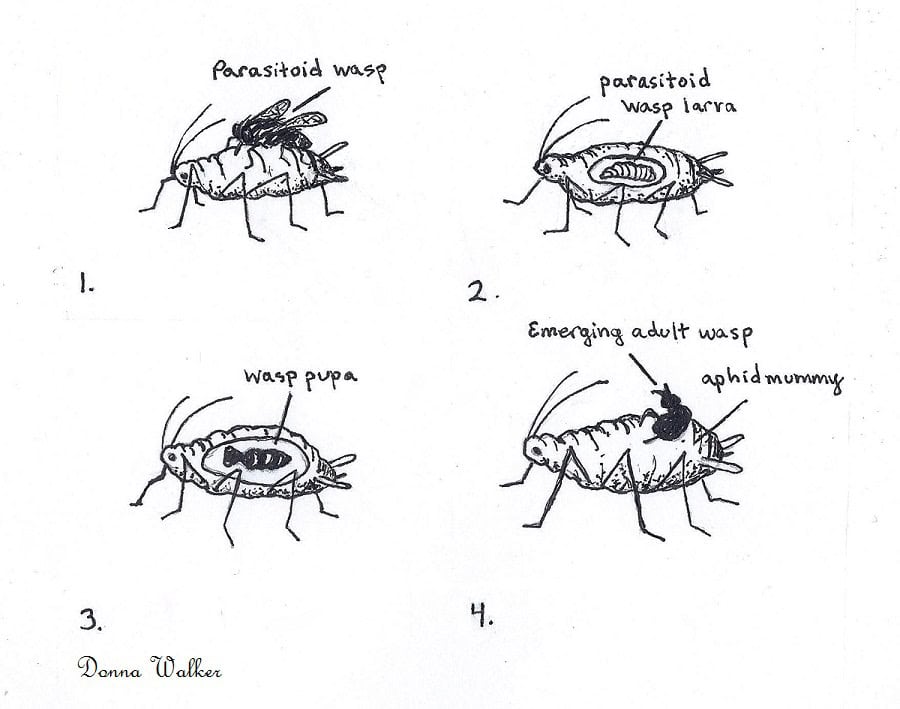
As the sustainable revolution grows into a rivalry against pesticides, the use of natural pest control will surge.
The goals of sustainable pest control are to target the unwanted pests without eliminating the beneficial insects as well as any pesticide residues entering our water systems and food.
Harmony amongst chemical and natural pest control will only exist once we use nature as a primary source of pest control and use the chemical pest control method as a last resort.

